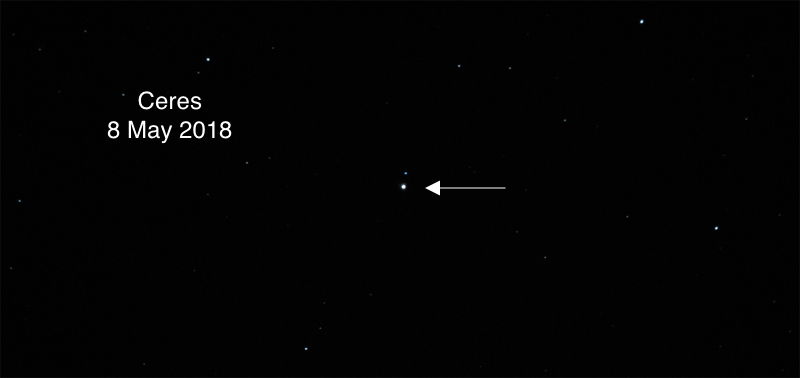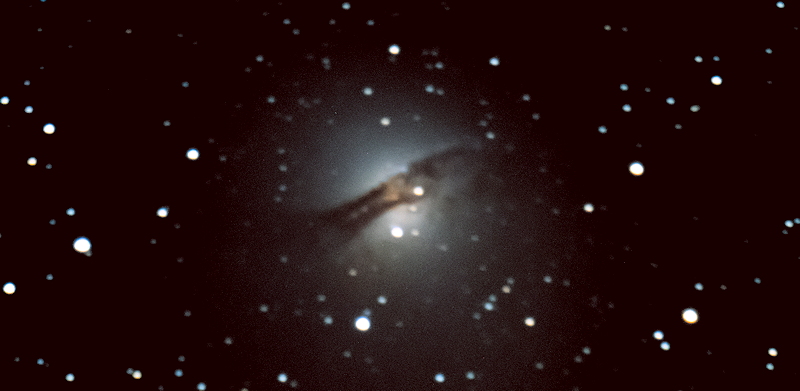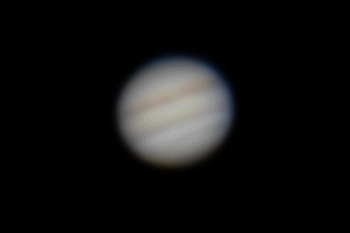Ceres; Quasar 3C273; M100 Galaxy;
Omega Centauri, M13, M92 Globular Clusters; Jupiter
Posted: 9 May 2018
Sunday, 6 May 2018, dawned clear but clouds began showing up in the western sky mid-morning, with a forecast of cloudy skies for the night. Monday, 7 May, was partly cloudy. Tuesday, 8 May, dawned clear with a clear sky forecast for the night.
|
Open: Tuesday, 8 May 2018, 1833 MST Temperature: 81°F |
Session: 1226 Conditions: Mostly clear |
Equipment Used:
12" f/8 LX600 w/StarLock
2" 24mm UWA eyepiece
2" 2X PowerMate
Camera:
D850 DSLR
1840 MST: LX600 ON, StarLock OFF, High Precision OFF.
Viewed Venus, 102X. Gibbous phase nicely visible. 1857 MST: Venus naked eye visible (with difficulty).
Decided to relax on the observatory patio bench for awhile. 1914 MST: sunset. Continued relaxing on the bench waiting for the stars to come out and listening to music from the original Cosmos TV show.
1945 MST: back in the observatory. Viewed Venus, 102X.
Began preparing the D850 DSLR for the night's prime focus imaging.
1953 MST: Wi-Fi ON. SYNCed on the star Regulus. Used SkySafari 6 Pro to GOTO Dwarf Planet (asteroid) Ceres. Viewed Ceres, 102X. Then began waiting for the sky to get darker.
2021 MST: mounted the D850 DSLR at prime focus of the 12" telescope. Focused on the star Regulus using a Bahtinov Mask.
2026 MST: the Zodiacal Light was brightly visible in the western sky. It was neat seeing it so late in the Spring.
2031 MST: Wi-Fi OFF, StarLock ON.
Did three images of Ceres at 15 minute intervals, StarLock autoguided, 10 seconds, ISO 3200, White Balance 4000K, to show its motion over a 30 minute period:


Slewed to the star Spica and SYNCed. Then slewed to Quasar 3C273 (last imaged in April 2013 using a D7000 DSLR on a 8" LX200-ACF).
2112 MST: dome OFF.
This is Quasar 3C273, StarLock autoguided, 5 minutes, ISO 6400, WB 4000K:

Slewed to M100 (galaxy) to retake its image (for better tracking). StarLock autoguided, 5 minutes, ISO 6400, WB 4000K:

Next, slewed to Centaurus A (galaxy), very low in the southern sky. I took this StarLock autoguided, 5 minutes, ISO 6400, WB 4000K:

As the image is slightly out-of-focus I will redo it on a future session.
I tweaked the focus and then did some images of globular clusters. These StarLock autoguided images are full-frame and at the same scale to show the apparent size difference. 2221 MST: dome ON.
Omega Centauri (30 seconds, ISO 2500, WB 4000K)

M13 (30 seconds, ISO 1600, WB 4000K)

M92 (30 seconds, ISO 1600, WB 4000K)

2236 MST: StarLock OFF.
Added the 2X PowerMate and did some video recordings of Jupiter (at opposition this night), 2160p 30 fps. This is a stack of 500 frames, 1/60sec, ISO 8000, White Balance Auto:

2256 MST: ended imaging.
Viewed Jupiter, 203X and 102X. The four Galilean Moons were visible.
2307 MST: viewed M4 (globular cluster) and then M57 (Ring Nebula), 102X.
2310 MST: LX600 OFF.
|
Close: Tuesday, 8 May 2018, 2318 MST Temperature: 70°F |
Session Length: 4h 45m Conditions: Clear |
I had several random triggers of the replacement Vello ShutterBoss III Wireless Remote this session. I will be reporting it to Vello.
Comments are welcome using Email. Twitter users can use the button below to tweet this report to their followers. Thanks.
Cassiopeia Observatory Home Page
Copyright ©2018 Michael L. Weasner / mweasner@me.com
URL = http://www.weasner.com/co/Reports/2018/05/09/index.html
